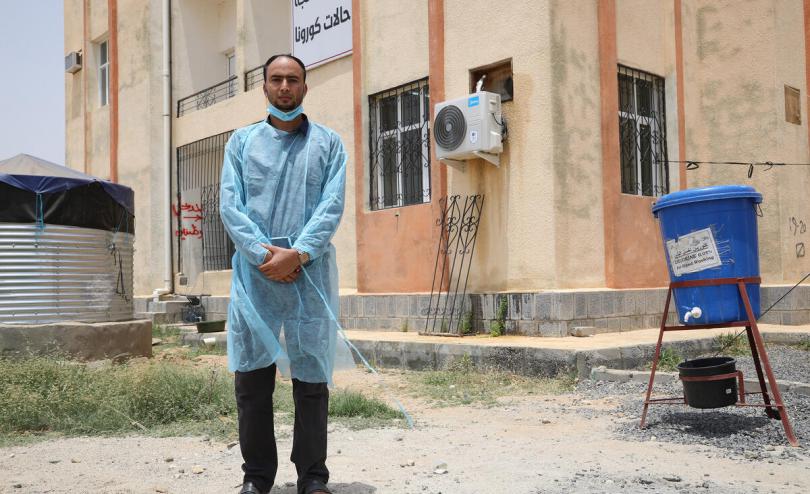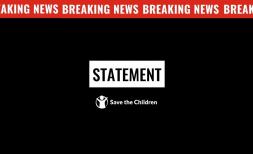Humanitarian health workers put their lives on the line during COVID-19 pandemic

‘This is my duty’.
At risk of catching the coronavirus, battling a lack of PPE and oxygen, treating patients in hostile environments while war planes drop bombs, and not being able to hug their loved ones – humanitarian health workers across the world are putting their lives on the line to help others during an unprecedented global pandemic.
The work is demanding at the best of times, but COVID-19 has impacted aid workers across the globe in new and complex ways. While the number of attacks on humanitarians more than halved over the first seven months[i] of this year due to COVID-19 restrictions, many health workers have died of the virus.
Despite these dangers, thousands of Save the Children aid workers put themselves into harm’s way every day to support children and their families under dire circumstances – sometimes at great personal cost. On the eve of World Humanitarian Day, two of them tell their stories.
Dr. Nabila works as a clinical supervisor for Save the Children in the Rohingya refugee camps of Cox’s Bazar in Bangladesh, where she is currently treating suspected COVID-19 patients. As a doctor and a humanitarian worker, she travelled to the camps day in, day out. She said: “This is my duty, just like other health professionals all over the world.”
However, in the overcrowded camps, where refugees struggle to practice social distancing or wear masks, often coming close or touching her hands, Dr. Nabila said: “It’s very difficult for us to make them understand the importance of these preventive measures. It’s very risky for us as well, but we need to do our duty.”
She continued: “My parents get emotional sometimes, like: ‘Why aren’t you coming to visit often, ‘Why are you keeping distance?’. It’s difficult to make them understand I could be a source of infection. I have twin nephews who are one-and-a-half years old. When they see me, they want to run and jump on me. So, it’s a challenge for me. Meeting my sister, my brother, my parents, it gets difficult nowadays.”
Save the Children is working hard to keep most of its programmes safe and running during the pandemic. Especially in the early months, there was a lack of personal protective equipment, said Gabriella Waaijman, Save the Children’s Humanitarian Director. “There was no solidarity between countries, especially the richer countries – it was disgraceful. We had two weeks’ worth of PPE for some countries, and one of my colleagues sighed – ‘I hope Africa will not be at the back of the line again.’”
“We were able to continue most of our programmes because thousands of our dedicated staff made personal, difficult choice to continue their work, despite the challenges.”
Dr Khalid Ahmed, manager of Abs COVID-19 treatment centre, continued to work during the outbreak. Despite efforts to bring in more equipment such as medicines, X-ray machines, PPE, testing kits, and oxygen, health workers in Yemen are overwhelmed in trying to meet the needs on the ground, many of whom have received pay from their employers for some time.
“This area is a real frontline. We can hear the sounds of artillery shelling here in the treatment centre.”
"Despite all the obstacles we face, health workers in the treatment centre are working 24/7, on a voluntary basis, for 2 months in a row without taking any time off. Besides, the lack of PPE is putting our lives at risk, and we cannot afford to lose any health worker."
We have some strong content available from Yemen and Bangladesh.
To support Save the Children’s global COVID-19 emergency appeal, click here.
If you have any questions, feel free to reach out:
Rik Goverde, rik.goverde@savethechildren.org / +44 (0) 7732 602 301
Out-of-hours: Media@savethechildren.org.uk / +44 7831 650 409
[i] Between January and July 2019, 437 aid workers were killed, injured or kidnapped – 422 of them were national staff. Between Jan and July 2020, 186 aid workers were killed, injured or kidnapped, 178 of them were national staff.




